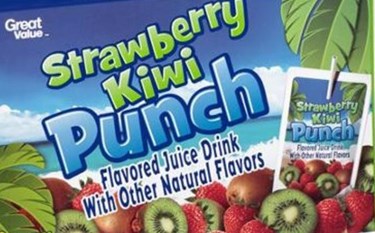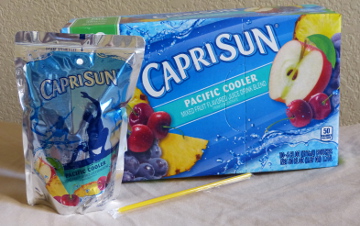Lawsuits Argue Fine Points Of Packaging Patents And Trademarks

By John Kalkowski, editor in chief, Food Online

Packaging is a manufacturing segment that relies heavily on innovation for its growth. Designers are constantly testing new materials and developing new structures, adding graphics and convenience features to capture the fancy of impulsive consumers strolling down retail aisles. But, what happens when those packaging ideas overlap between competitors? Then, the matter may end up in the courts.
It appears that is exactly what is happening in the case of Capri-Sun, which is suing Minneapolis-based Faribault Foods for using pouches they say are similar to their trademarked packaging. Capri-Sun is a ubiquitous juice pouch that has been seen in the hands and lunch boxes of kids since its U.S. launch in the 1980s. Capri-Sun is owned by Deutsche SiSi-Werke Betriebs GmbH, a division of Rudolph Wild, based in Eppelheim, Germany. It is distributed in the U.S. by Kraft Foods. SiSi, as it is known, was a pioneer in the use of stand-up pouches, and for years pretty much seemed to own this market.
Protecting Intellectual Property
That’s why governments around the world have created patents, trademarks, and copyrights to protect intellectual property rights of those who conceive and develop innovative products. This case is an interesting story of how one company is struggling mightily to hold onto those rights as long as they can.
Faribault co-manufactures packaging and food products for several brands, such as Walmart’s Great Value flavored juice drinks. The suit alleges that Faribault is using packaging so similar to Capri-Sun’s that it violates their trademark by making consumers think that they are drinking a Capri-Sun product. Several companies — including Coca-Cola’s Honest Tea, privately-owned Sunny D, Kraft’s own Kool-Aid, and Back To Nature — all use a similar stand-up pouch, known as a DoyPack, for the juice drinks.
Carsten Kaisig, managing director of SiSi, stated that the complaint was filed against Faribault because “the iconic pouch design is a strong indicator of the source of Capri-Sun juice drinks in the eyes of the consumers in the U.S. and throughout the world… it would be a disservice to consumers to allow Faribault to continue deceiving and confusing customers into believing that the Faribault beverage products are affiliated with or endorsed by the same source as Capri-Sun juice drinks.”
Packaging can be key to building a brand. A well-known designer once stated that the two best packages ever designed are the egg and the Coca-Cola bottle. As far as I know, there are no patents on eggs, although some companies do imprint their brand’s trademarks on the outside. And while Coke has adopted other forms of packaging, its iconic glass bottle still remains in use and is easily identifiable.
Many Brands Utilize Stand-Up Pouches

But, is the Capri-Sun pouch all that unique? I can think of many products using stand-up pouches with virtually indistinguishable characteristics except for their decoration or size. As the photos accompanying this story show, it is highly unlikely that the Walmart product would be mistaken for a Capri-Sun pouch.
In fact, many packaging types are commonly used by different brands within the same product segment. Look at gallon plastic milk jugs or gable top half-gallon containers used for milk and juice. Nowadays, they may have a different closure on them, but for years, the only differences were the graphics printed on them. Mayonnaise jars are all pretty standard.
As you cruise a food store’s aisles, it easy pretty obvious that many products’ packaging come from the same branch of the family tree. And as much as the industry likes to proclaim revolutions in packaging, evolution is probably the more apt description.
Gaining Unlimited Protection
In a 1998 article, intellectual property attorney Joseph Hosteny wrote that Capri-Sun dominated the stand-up pouch industry for over 10 years by applying for a trademark on the pouch, which had been patented in 1985 by a French inventor. Patent laws are designed to protect inventions for a specific number of years before the designs enter the public domain. Trademark laws allow protection for an unlimited time. The trademarking had the effect of “extending the life of an expired patent for an unlimited duration.”
Capri-Sun first filed a lawsuit claiming violation of its trademark in 1998 against The Children’s Beverage Group. That case was settled out of court. However, Hosteny argues that the trademark law was misapplied in this case. He says, “The configuration being protected by the trademark laws is not really distinguishable from the patented invention,” which is now in the public domain.
Capri-Sun made a similar challenge in Dutch courts in 2014, when it sued Van Doorne Beverages and Rhia Wesergold, alleging trademark infringement. In both cases, Capri-Sun’s shape mark was declared invalid. The defendants had argued that the package shape was necessary to obtain a technical result.
Trademark Test Based On Functionality
That point is likely to be a key issue in the Faribault case, according to Justin McNaughton, a Nashville-based patent attorney. He writes: “Most people would likely be surprised to find that the Capri-Sun pouch has its own registered trade dress. Although not well known in the U.S., trade dress can be registered just like a trademark if: (1) it is not functional and (2) it is distinctive. However, the predominant issue is whether the trade dress is functional. The test for functionality is whether the trade dress is “essential to the use or purpose of the article or if it affects the cost or quality of the article.”
McNaughton says the U.S. Trademark Office will review four points to determine whether trade dress is functional:
- The existence of a utility patent that discloses the utilitarian advantages of the design sought to be registered.
- Advertising by the applicant that touts the utilitarian advantages of the design.
- Facts pertaining to the availability of alternative designs.
- Acts pertaining to whether the design results from a comparatively simple or inexpensive method of manufacture.
Any feature claimed in a utility patent must necessarily be functional. He also suggests that “if you gush about the usefulness of your trade dress in your advertisements, then those statements will be used against you as evidence that the trade dress is functional.” A plaintiff also might be required to submit evidence that there are other possible designs within the same type or category of goods. Another twist is that if a design “embodies a superior design feature and provides a competitive advantage to the user” it is considered functional.
If it is determined that the trade dress is not functional, the examiner will next determine whether the trade dress is distinctive. There are two types of trade dress: product design; and product packaging. Product packaging can be inherently distinctive (think of Coke or Gatorade bottles), but product design cannot. McNaughton says product design is presumed NOT to be distinctive, so companies must show that people have come to recognize the design as your product in the marketplace through your advertising, etc. (Pepperidge Farm goldfish).
Of course, brand owners and designers consider many of these factors during product and packaging development. However, these cases demonstrate just how complicated the process can be.
